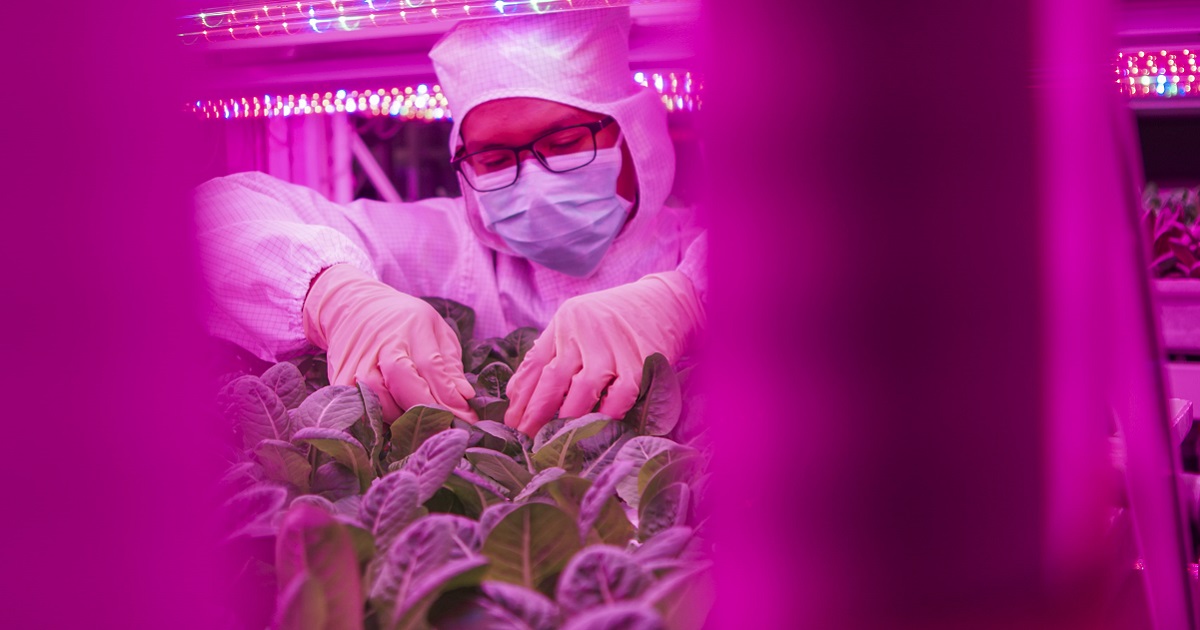Blockchain and Agriculture
Blockchain addresses problems in the agricultural industry and VFarm team shares how does the technology help with their urban farming endeavours. This was an article features in In Focus magazine issue 5.
Supply chains have been perceived as one of the torrid areas for agriculture blockchain development. The current system is plagued by a host of problems, from outdated record keeping to ethical concerns – the general problem is origin. The answer does exist but it’s buried in a filing cabinet somewhere. Farms, processors, shippers, distributors, retailers and consumers generate a profusion of data that’s spread across a multitude of silos, making answers of any kind difficult to find. Not being able to comprehend the importance of the supply chain means that buyers and sellers are often not optimally organised and leads to significant inefficiencies such as food waste.
VFarm, an agriculture social enterprise that initiates urban farming in Kuala Lumpur, uses blockchain and through VFarm Agro Traceability Blockchain (ATB), we address these issues in order to greatly enhance food safety and security through establishing trust and transparency. ATB features make it possible for the various networks – farms and consumers – to register and share information with maximum safety, trustworthy, transparency and tamperproof. Blockchain allows for data entered to be visible to all. Also, there’s freedom to approve or reject the information. Once data is validated, it gets recorded into blocks which gets organised in a chronological chain and unable to be altered by anyone.
Why bother? Simply because, as what Nèstle Global Head of Supply Chain claims, ‘People want to know what are the ingredients in the product, where the ingredients come from.’ Blockchain gives instant data related to, for instance, seed quality, soil moisture, climate as well as environment related data, and more, all in one platform. It helps in establishing a direct link between farmers and consumers.
What’s more, blockchain will empower farmers to organise themselves and network, to reach the intermediary market without middlemen. This means, it’ll reduce the problems arising from dealing with middlemen. The transparency enables farmers to get the real price for their produce, not forgetting to eliminate barriers, efficient supply of products, fair pricing and improved product tracking. Farmers would be able to do real-time management of the stock, with all the information starting from seed procurement, harvest to sale at Point of Sales system which can be recorded on the blockchain. What this means is, farmers as well as consumers can conveniently quantify, monitor and control risks throughout the agriculture process.
The Usefulness of Blockchain in Agriculture
Collaborating with Malaysian Agricultural Research and Development Institute (MARDI) allows us to identify and address concerns pertaining to blockchain in agriculture. We’ve installed sensors at the planting rack in order for the data of the environment, irrigation, lighting and plant sensor for the crop growth to be captured via IoT with all the data shared via ‘one big ledger in the cloud’. Nevertheless, there are impending issues relating to the implementation of blockchain, including high development cost, lack of industry wide funds available in Malaysia and policy related.
Before the introduction of blockchain and its decentralisation concept, data entry and record keeping are done manually, in fragments and often blunders the operation. The bridge of trust and transparency within agriculture supply chain was also established via long term engagement, awareness activation and track record of performance. However, it’s very much restricted to a centralised parameter and it’s strenuous to verify the authenticity of the trust built. In brief, blockchain’s a useful tool for agricultural practices to become more precise and efficient.
Urban farming has always been questioned for the way crops are produced and compared to conventional farming. Blockchain-powered IoT can put all these debates to rest when it’s constantly gathering data of different aspects of crops – from the temperature of the environment to the mineral and nutrient contents in the water. Due to the transparency of blockchain those with access can have full closure of the crops they’ll be having. In a way, it gives consumers a boost of confidence in the consumption of produce and also enables farmers to utilise the data to the fullest in improvising the farms if needed.
Blockchain in VFarm’s Future
VFarm plans to establish a marketplace via ATB that’ll enable small farms to participate directly in the urban market. Blockchain provides an open platform for both small farms and buyers to negotiate for reasonable prices of their produce. Small farms can make direct mobile payment transactions to the buyers. This eliminates intermediaries and brokers. Retailers, farmers and manufacturers can claim premiums of some products by using this technology. It connects ecosystem users directly, simplifying the ordering process. Buyers can decide on multiple criteria such as price, environmental and social impact including carbon as well as water usage footprint and farms managed by BoP (base of the pyramid).
The marketplace will also support contract farming and supply. Small farms can access financial help since many can’t afford the capital to modernise their farming, through ATB. Mobile banking keeps track of the ledger account for easy entry to financing and blockchain provides a decentralised platform that gives transaction history and a reliable farmer’s identity. With the digital information, farmers can acquire loans systematically.
Achieving Food Security in the Decade
Food security is a measure of the availability of food and a person’s accessibility to it – this includes their affordability. During the 2019 SEAVEG (Southeast Asia Vegetable) Symposium in Melaka, organised by MARDI, academicians and researchers collectively agreed about the minimal progress that has been made when it comes to food security. According to the committee of World Food Security, food security is defined as, ‘all people, at all times, have physical, social and economic access to sufficient, safe and nutritious food that meets their dietary needs and food preferences for an active and healthy lifestyle’.
Below is the action plan that can be taken into consideration:
Farmers – Current agriculture land is producing 50 per cent less than what it could produce. Thus, covering the yield lost with potential yield can be achieved by applying advanced technology into the agriculture, such as vertical farming which reduces the need of more land. Compliance to certain quality standard such as MyGAP (My Good Agricultural Practice) , implementing new technologies as part of the value proposition to the produce, truthful and honest about the economic model, as well as actively engage in communal farming or marketing, will able to enhance sustainable food supply.
Policymakers – To spur or support initiatives related to food security, few major actions can be implemented in stages for implementation to have a high industry standard practices, to empower technology adoption for producers, to raise awareness in national level, to invest in analytics technologies, to strive for a precise related data collection, to empower corporates to take on the challenge and to reward participation from different stakeholders such as producers and consumers.
Economic Inclusivity – Empowering female farmers and agropreneurs in a male-dominated industry is crucial as women have been manning farms alongside their male counterparts in plenty of Asian countries. According to FAO, female share of the agricultural labour force has only increased slightly during the past three decades. Financial services and guidance should be provided for the up-and-coming farmers to get women on track.
Food Waste – Food waste is an issue as well. Inefficient preparation of food production has generated 16,687.5 tonnes of food waste in Malaysia. This amount could actually feed 12 million individuals three times a day. Thus, managing an efficient food distribution is crucial and smart data can definitely be a great tool to help the process.
Last Words
Having suggested these actions, there’s actually no silver bullet. Food security in particular, the food supply and demand, it is complex. In addition to date, there are no global analyses of food security in which different levels are addressed consistently to explore continental, regional, national and local contexts and solutions. We need to keep on engaging in conversations and efforts to establish pathways to security and VFarm strives to actively participate in the collective process.

